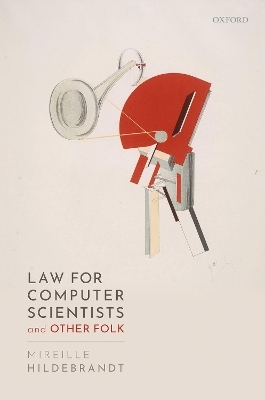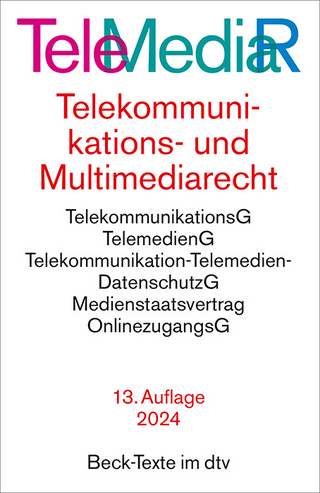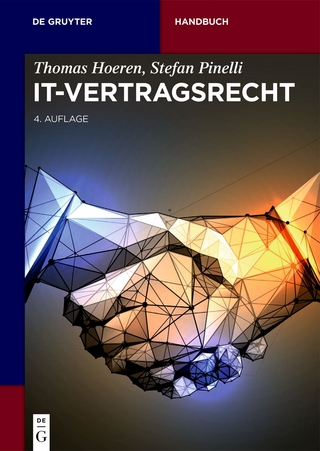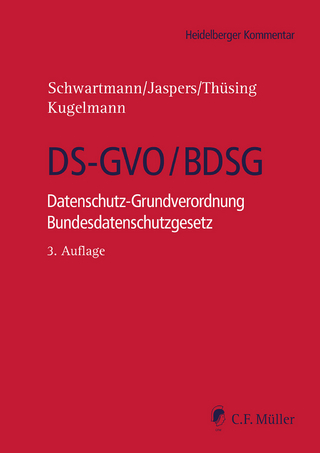
Law for Computer Scientists and Other Folk
Oxford University Press (Verlag)
978-0-19-886088-4 (ISBN)
This is the first textbook introducing law to computer scientists. The book covers privacy and data protection law, cybercrime, intellectual property, private law liability and legal personhood and legal agency, next to introductions to private law, public law, criminal law and international and supranational law. It provides an overview of the practical implications of law, their theoretical underpinnings and how they affect the study and construction of computational architectures. In a constitutional democracy everyone is under the Rule of Law, including those who develop code and systems, and those who put applications on the market. It is pivotal that computer scientists and developers get to know what law and the Rule of Law require. Before talking about ethics, we need to make sure that the checks and balances of law and the Rule of Law are in place and complied with. Though it is focused on European law, it also refers to US law and aims to provide insights into what makes law, law, rather than brute force or morality, demonstrating the operations of law in a way that has global relevance. This book is geared to those who have no wish to become lawyers but are nevertheless forced to consider the salience of legal rights and obligations with regard to the construction, maintenance and protection of computational artefacts.
This is an open access title available under the terms of a CC BY-NC-ND 4.0 International licence. It is offered as a free PDF download from OUP and selected open access locations.
Mireille Hildebrandt, Research Professor 'Interfacing Law and Technology', Free University Brussels
Acknowledgements
Reading Guide
Abbreviations
Table of Contents
1: Introduction: Textbook and Essay
1.1: Middle ground: architecture
1.2: Law in 'speakerspace'
1.3: Law in 'manuscriptspace'
1.4: Law in 'bookspace'
1.5: Law in cyberspace: a new 'onlife world'
1.6: Outline
PART I WHAT LAW DOES
2: Law, Democracy, and the Rule of Law
2.1: What is Law?
2.2: What is law in a constitutional democracy?
3: Domains of Law: Private, Public, and Criminal Law
3.1: Private, public and criminal law: conceptual distinctions
3.2: Private law
3.3: Public law and criminal law
4: International and Supranational Law
4.1: Jurisdiction in Western legal systems
4.2: International law
4.3: Supranational law
4.4: International rule of law
PART II DOMAINS OF CYBERLAW
5: Privacy and Data Protection
5.1: Human rights law
5.2: The concept of privacy
5.3: The right to privacy
5.4: Privacy and Data Protection
5.5: Data protection law
5.6: Privacy and data protection revisited
6: Cybercrime
6.1: The problem of cybercrime
6.2: Cybercrime and public law
6.3: The EU cybercrime and cybersecurity directives
7: Copyright in Cyberspace
7.1: IP law as private law
7.2: Overview of IP rights
7.3: History, objectives and scope of copyright protection
7.4: EU copyright law
7.5: Open source and free access
8: Private Law Liability for Faulty ICT
8.1: Back to basics
8.2: Tort law in Europe
8.3: Third-party liability for unlawful processing and other cyber torts
PART III FRONTIERS OF LAW IN AN ONLIFE WORLD
9: Legal Personhood for AI?
9.1: Legal subjectivity
9.2: Legal agency
9.3: Artificial agents
9.4: Private law liability
10: 'Legal by Design' or 'Legal Protection by Design'?
10.1: Machine learning (ML)
10.2: Distributed Ledger Technologies (DLTs), smart contracts and smart regulation
10.3: 'Legal by Design' or 'Legal Protection by Design'?
FINALS
11: Closure: on ethics, code and law
11.1: Distinctions between law, code and ethics
11.2: The conceptual relationship between law, code and ethics
11.3: The interaction between law, code and ethics
11.4: Closure: the force of technology and the force of law
| Erscheinungsdatum | 03.01.2020 |
|---|---|
| Verlagsort | Oxford |
| Sprache | englisch |
| Maße | 155 x 233 mm |
| Gewicht | 580 g |
| Themenwelt | Recht / Steuern ► EU / Internationales Recht |
| Recht / Steuern ► Privatrecht / Bürgerliches Recht ► IT-Recht | |
| Recht / Steuern ► Wirtschaftsrecht ► Urheberrecht | |
| ISBN-10 | 0-19-886088-9 / 0198860889 |
| ISBN-13 | 978-0-19-886088-4 / 9780198860884 |
| Zustand | Neuware |
| Informationen gemäß Produktsicherheitsverordnung (GPSR) | |
| Haben Sie eine Frage zum Produkt? |
aus dem Bereich


